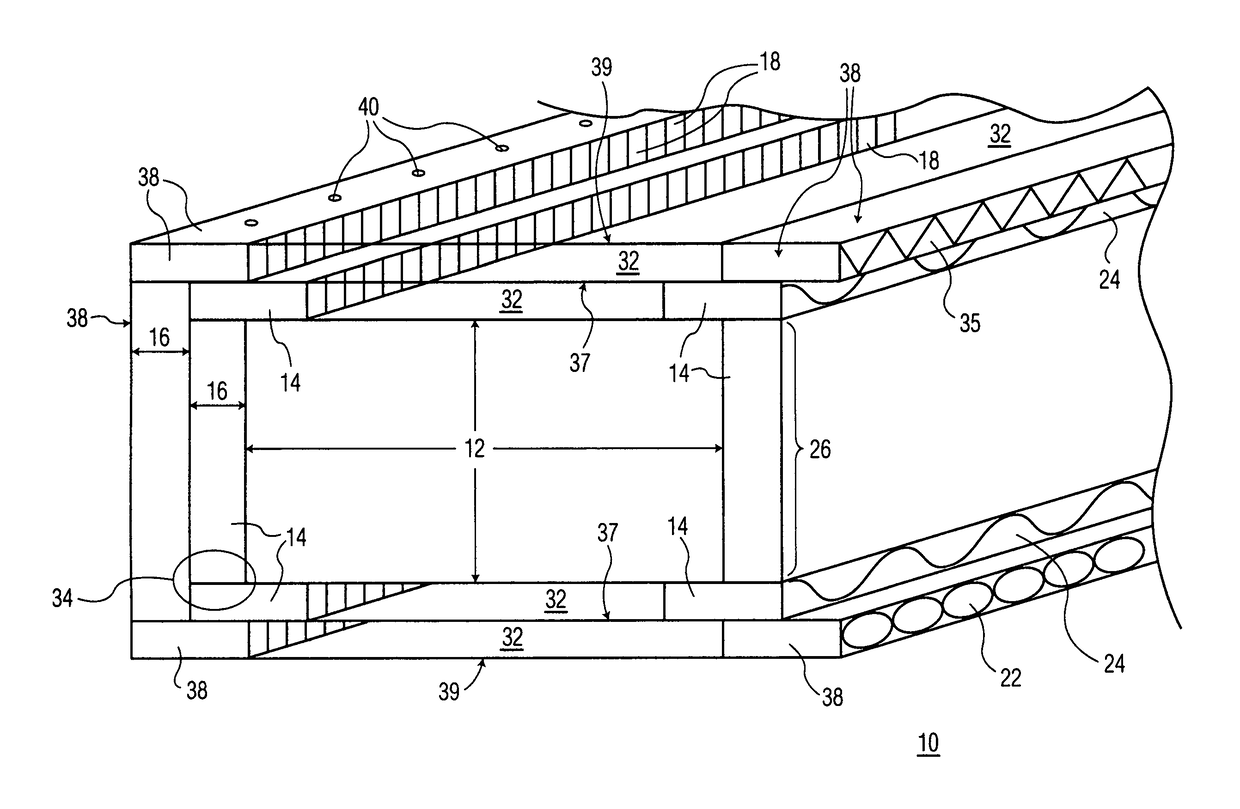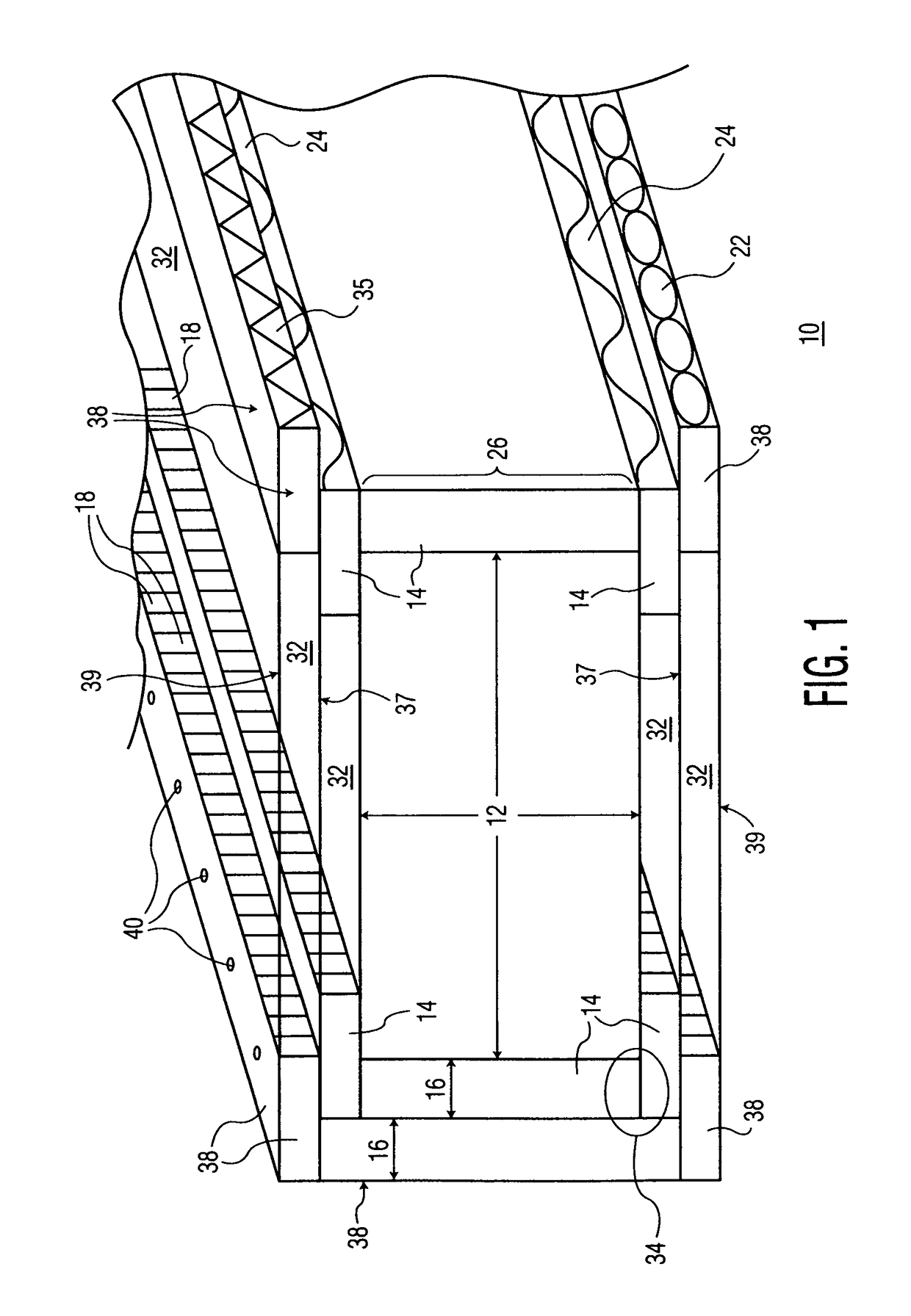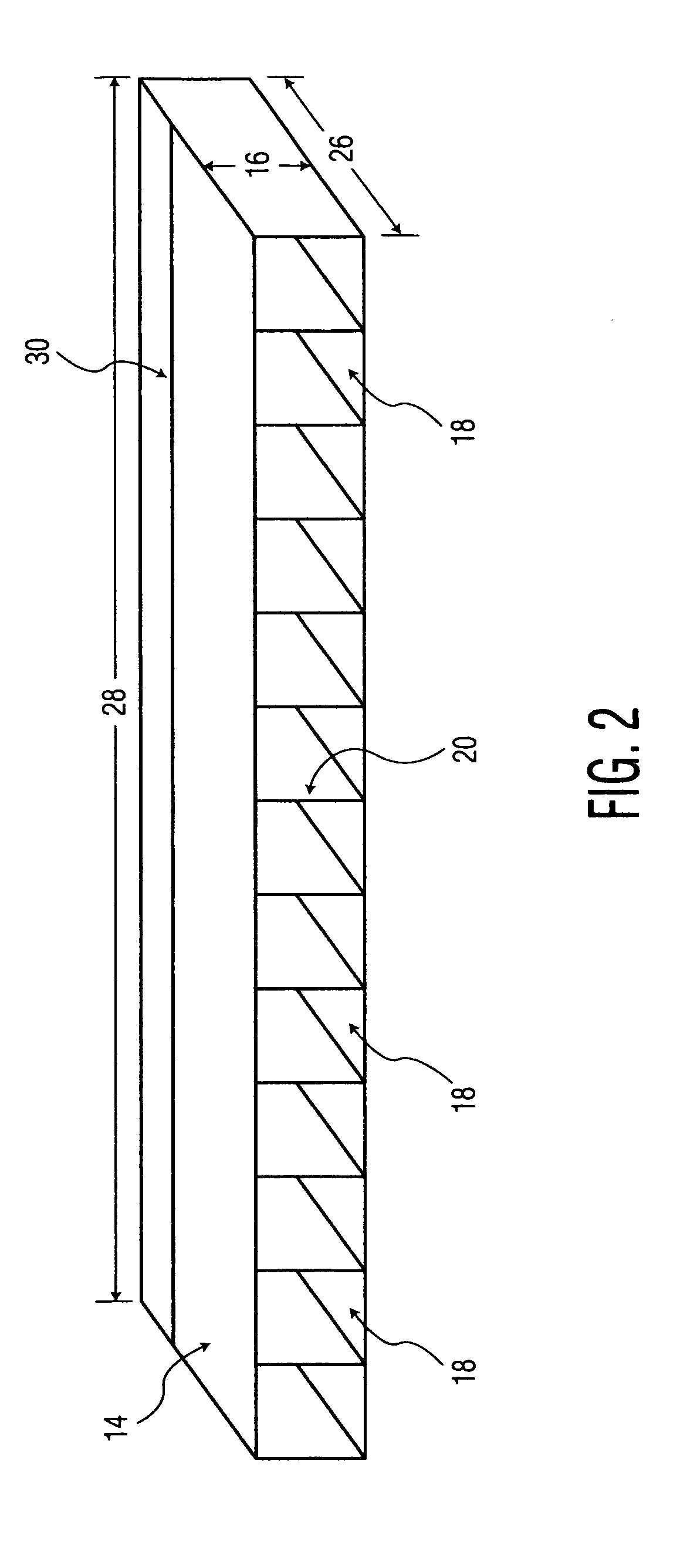Spacer system for reflective insulation
a spacer system and reflective insulation technology, applied in the direction of ducting arrangement, lighting and heating apparatus, heating types, etc., can solve the problems of insufficient insulation and inefficiency, no system in use in private or commercial buildings, air space during installation and r-value compromis
- Summary
- Abstract
- Description
- Claims
- Application Information
AI Technical Summary
Benefits of technology
Problems solved by technology
Method used
Image
Examples
Embodiment Construction
[0016]The preferred embodiments of the present invention will now be described with reference to the FIGS. 1-5 of the drawings. Identical elements in the various figures are designated with the same reference numerals.
[0017]FIG. 1 illustrates a preferred embodiment of the system of the present invention, generally designated by the reference number 10. The system comprises a ventilation air duct 12 as commonly used in residences, commercial buildings, and the like, for heating and / or cooling, such as in HVAC systems. Traditionally, the ducts are rectangular or square.
[0018]Connected to the air duct is a first spacer 14, as shown in FIG. 1 as being on the vertical sides and corners of the duct. First spacer 14 is made preferably of a light-weight non heat-conductive material such as stiff paper or cardboard, plastic, Styrofoam, or similar material. Spacer 14 has a thickness 16 that can vary but preferably is a minimum of ⅛ inches up to 1 inch to provide sufficient air space for insul...
PUM
 Login to View More
Login to View More Abstract
Description
Claims
Application Information
 Login to View More
Login to View More - R&D
- Intellectual Property
- Life Sciences
- Materials
- Tech Scout
- Unparalleled Data Quality
- Higher Quality Content
- 60% Fewer Hallucinations
Browse by: Latest US Patents, China's latest patents, Technical Efficacy Thesaurus, Application Domain, Technology Topic, Popular Technical Reports.
© 2025 PatSnap. All rights reserved.Legal|Privacy policy|Modern Slavery Act Transparency Statement|Sitemap|About US| Contact US: help@patsnap.com



